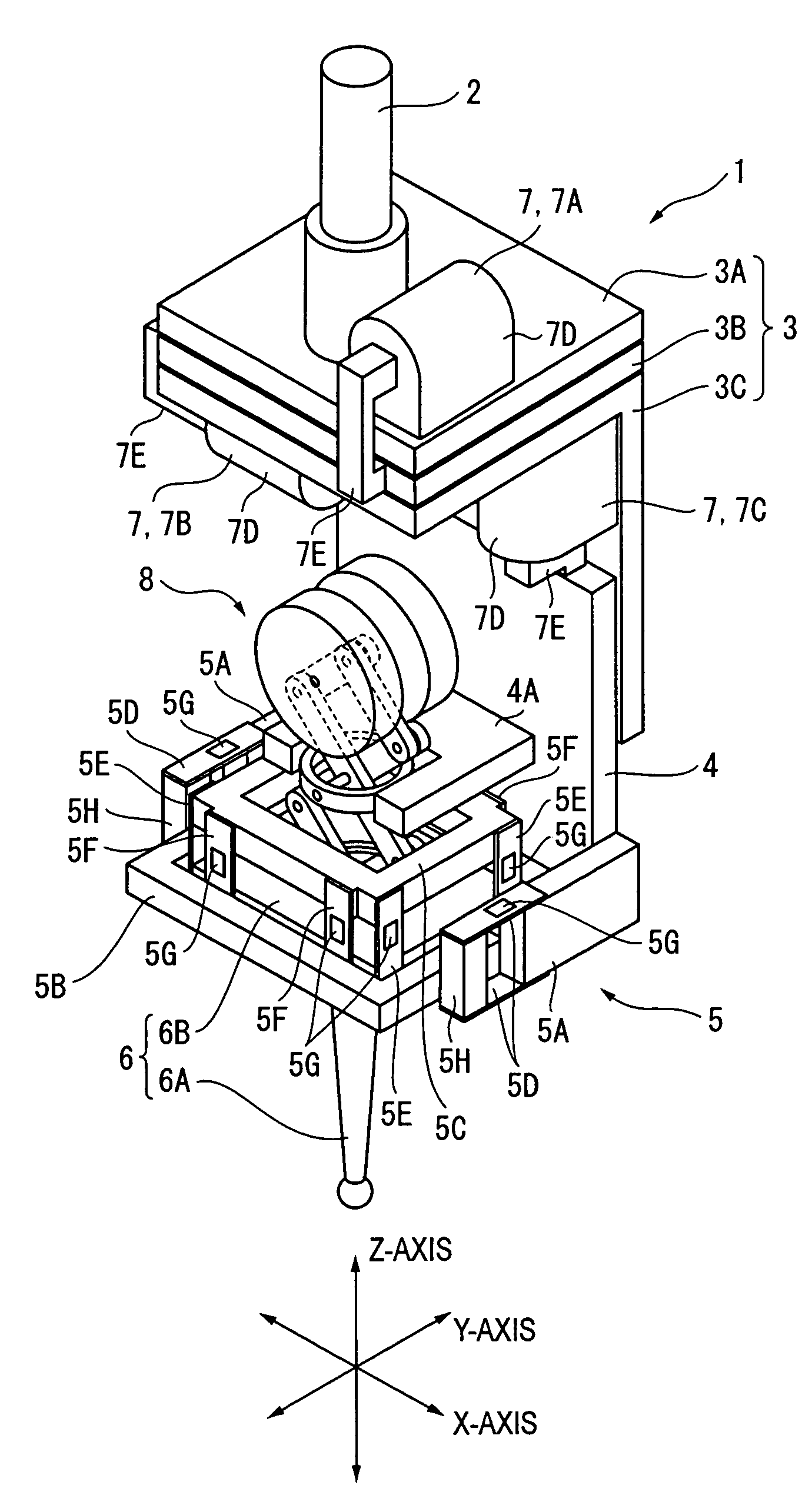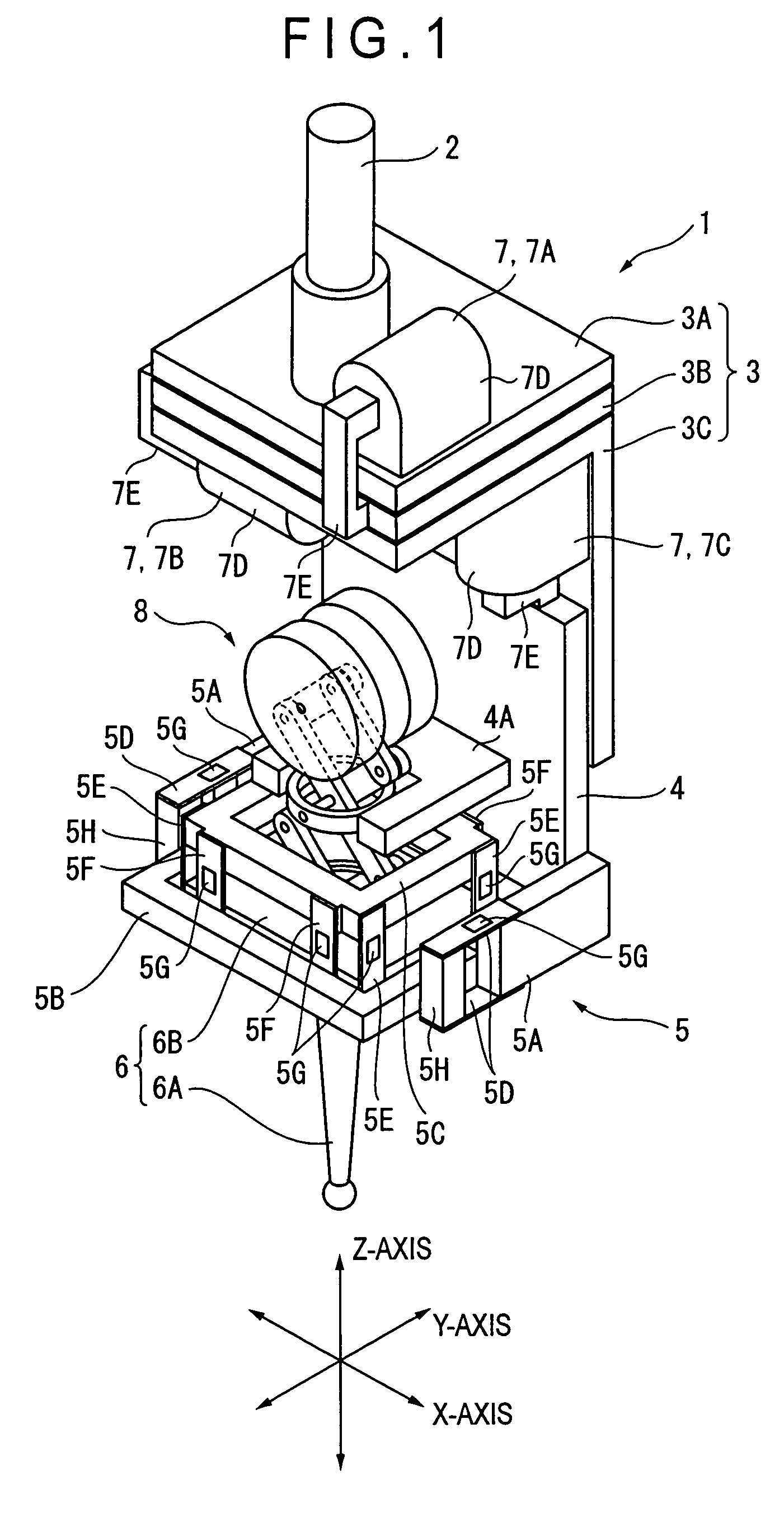Scanning probe
a scanning probe and probe body technology, applied in the field of scanning probes, can solve the problems of reducing the tracking capability of the measurement stylus to the surface of the workpiece, affecting the accuracy of measurement, and reducing the driving force of the measurement stylus, so as to eliminate the influence of inertial force and achieve high precision measurement
- Summary
- Abstract
- Description
- Claims
- Application Information
AI Technical Summary
Benefits of technology
Problems solved by technology
Method used
Image
Examples
first embodiment
[0027]FIG. 1 is a perspective view showing a scanning probe 1 according to a first embodiment. FIG. 2 is a perspective view showing a partial cross section of the scanning probe 1. FIG. 3 and FIG. 4 are side elevations illustrating operations of a contacting force adjuster provided in the scanning probe 1. FIG. 5 is an explanatory view showing a procedure of measurement with the scanning probe 1.
[0028]In FIG. 1, the scanning probe 1 includes a mounting shaft 2 mounted on a driving arm of a coordinate measuring machine not shown in the figures, and is driven in each of the three directions (X, Y, and Z directions) perpendicular to each other in association with movement of the driving arm. Namely the scanning probe 1 in FIG. 1 is a three-dimensional scanning probe based on the contact system which is driven in two horizontal directions (X and Y directions) along a surface of an object to be measured (workpiece) not shown in the figures and placed below the scanning probe 1 and in the...
second embodiment
[0056]FIG. 6 is a perspective view showing a partial cross section of a scanning probe 10 according to a second embodiment. FIG. 7 is an explanatory view showing a procedure of measuring with the scanning probe 10. In the scanning probe 10 according to the second embodiment, configuration of the contacting force adjuster is different from that in the first embodiment described above. Other portions of the configuration are almost the same as those in the first embodiment.
[0057]In FIG. 6, an acceleration sensor (accelerometer) 11 is provided on a top surface of the stylus mounting section 6B of the stylus 6. The acceleration sensor 11 is a three-axis acceleration sensor capable of detecting acceleration in each of the three axial directions along the X, Y and Z-axes, so that acceleration in the X, Y, Z directions acting to the stylus 6 can be detected respectively. The acceleration sensor 11 is connected with a cable or the like not shown to the controller 101 (FIG. 7) of the coordin...
PUM
 Login to View More
Login to View More Abstract
Description
Claims
Application Information
 Login to View More
Login to View More - R&D
- Intellectual Property
- Life Sciences
- Materials
- Tech Scout
- Unparalleled Data Quality
- Higher Quality Content
- 60% Fewer Hallucinations
Browse by: Latest US Patents, China's latest patents, Technical Efficacy Thesaurus, Application Domain, Technology Topic, Popular Technical Reports.
© 2025 PatSnap. All rights reserved.Legal|Privacy policy|Modern Slavery Act Transparency Statement|Sitemap|About US| Contact US: help@patsnap.com



